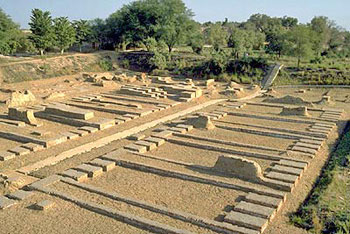This is the habitable zone for life to take place on planet orbiting stars.
As our space probes find more and more out about the Universe, the majority of scientist seem to be more and more surprised. They still don't want to believe that people are out in space. The majority of the American people believe that people live on other planets. People don't have to believe. All they have to do is look at the evidence on Earth. Below is an article from CNN on what the scientist have found.
January 8th, 2013
01:00 PM ET
Planets, planets, planets!
By Elizabeth Landau, CNN
We still don't know if Earth, as a planet that currently harbors life, is alone in the universe. But scientists are actively searching for clues about other potential habitable worlds outside our solar system.
Astronomers are presenting their latest findings at the American Astronomical Society annual conference in Long Beach, California, this week. The word on the cosmic street is that Earth-sized planets are relatively common and that hundreds of new planet candidates have been identified.
"We have begun to truly map the planets in our galaxy akin to the way that early explorers mapped the Earth," said Sara Seager, professor of planetary science and physics at the Massachusetts Institute of Technology, who works with data from the NASA Kepler mission, which aims to identify planets outside of Earth's solar system.
Scientists from the University of California, Berkeley and the University of Hawaii at Manoa have estimated that 17% of stars that are like our sun host planets with a diameter of one to two times that of Earth, which orbit close to these stars.
This is based on data from NASA's Kepler mission, which can only detect planets that have a much smaller orbital radius (about 25%) than Earth's. That means that 17% of sun-like stars in the galaxy would have a planet about the size of Earth, or slightly bigger, within the orbit of Mercury.
If we're talking about planets about the size of Earth or a little bigger - that are within Earth-like orbits - that could apply to as many as 50% of all stars in the galaxy, but that doesn't mean these planets could host life.
A planet with a diameter of two to three times that of Earth would generally resemble Uranus and Neptune, according to the scientists. These planets would have a rocky core, hydrogen and helium gases and maybe even water. Near to a star, a rocky planet could have oceans with depths of hundreds of miles.
The Kepler telescope takes repeated images of the constellation Cygnus - specifically, of 150,000 stars. Computer software analyzes those images by looking for dimming of the stars, which might indicate that a planet is passing in front of it during orbit. At least three transits must be observed to be considered the signal of a planet candidate.
"Based on the new Kepler results, it's just breathtaking to realize that some of our very nearest neighboring stars must have Earth-size planets," Seager said.
It is easier for Kepler to detect big planets because these planets make the star dim more than small planets during transit. For example, a Jupiter-sized planet makes a star dim by one part in 100, while a planet the size of Earth would only dim a star by one part in 10,000. Given these limitations, researchers estimate that Kepler misses about one in four Earth-sized planets.
And there's more news from Kepler this week: The mission has discovered 461 candidate planets. That means that they still need to be confirmed as planets, but there's a whole lot of them. In terms of potential targets for extraterrestrial life, four of these are less than twice the size of Earth and have orbits in the "habitable zone."
That's the term astronomers use to talk about the range of distance from a star in which liquid water could exist on a planet's surface.
The 461 planets come from observations that took place from May 2009 to March 2011. Researchers found an uptick in the number of smaller planet candidates and the stars that have more than one potential planet orbiting them.
Kepler's database of potential planets has increased 20% since February 2012, with a total of 2,740 planet candidates orbiting 2,036 stars.
Scientists must perform additional analyses to confirm that a planet exists. So far, from the Kepler data, there have been 105 planets confirmed.
It appears 43% of the potential planets identified by Kepler have neighbor planets, meaning many of them exist in multi-planet solar systems.
Follow @CNNLightYears on Twitter
Keep in mind, I told you about this map that Betty Hill remembered seeing in the space ship that abducted her and her husband in the 1960s. At that time, scientist said that other planets outside our solar system did not exist. Now we find out that other planets around other stars do exist. Betty's map above looks like a map of trade routes to me.
I wonder when the governments of the world especially the United States will get around to telling us about other people on other worlds? The Russians and some former Canadian government officials have done so already. The Vatican is now saying after years of excommunicating people that it is OK to believe in UFOs and aliens. So the day is coming and it is coming fast!












